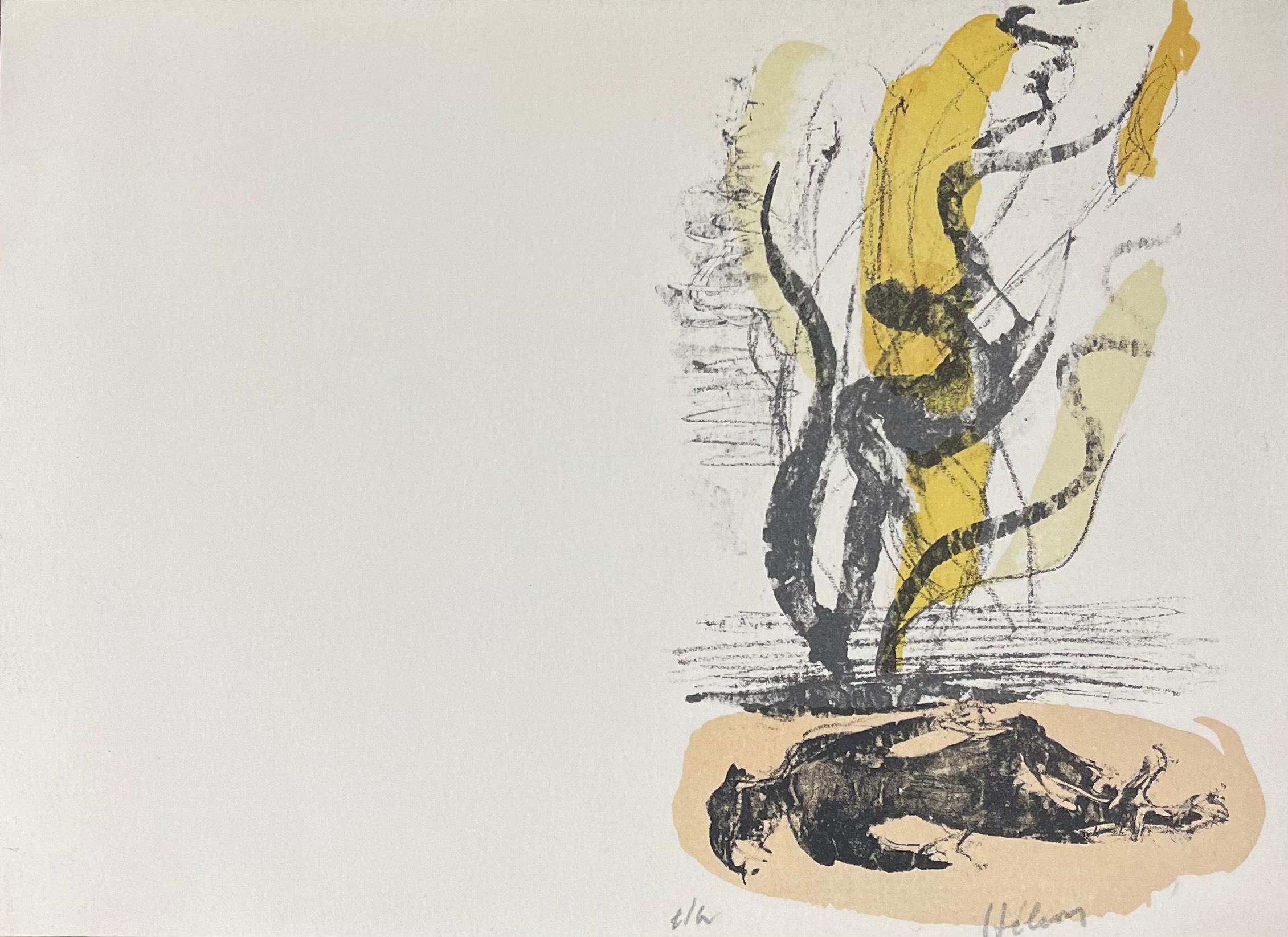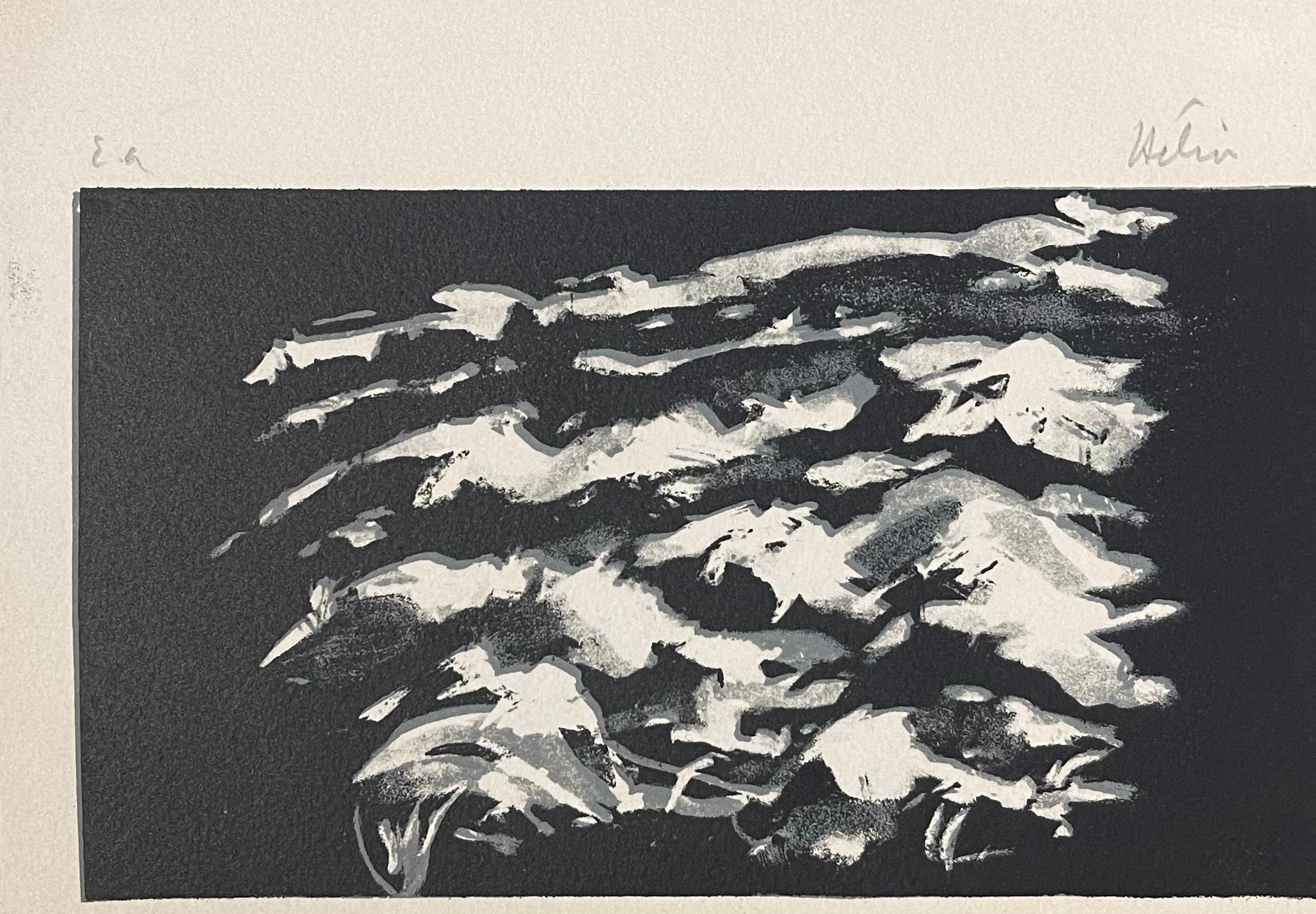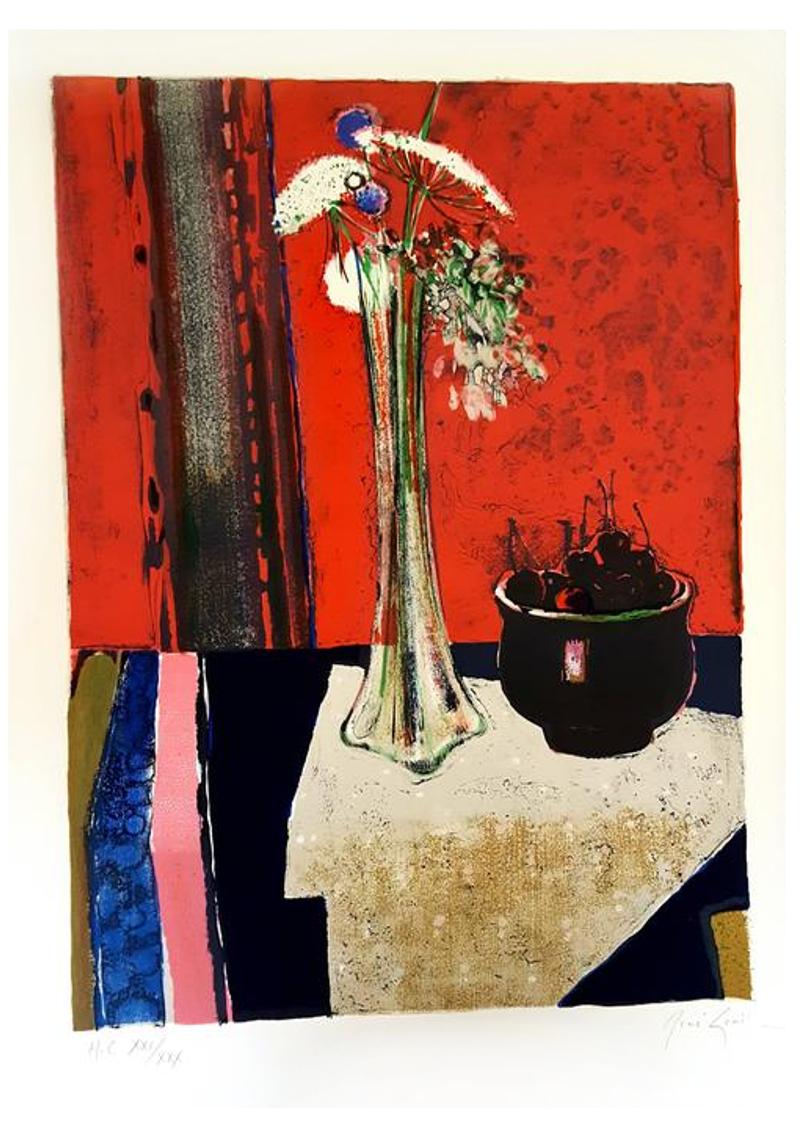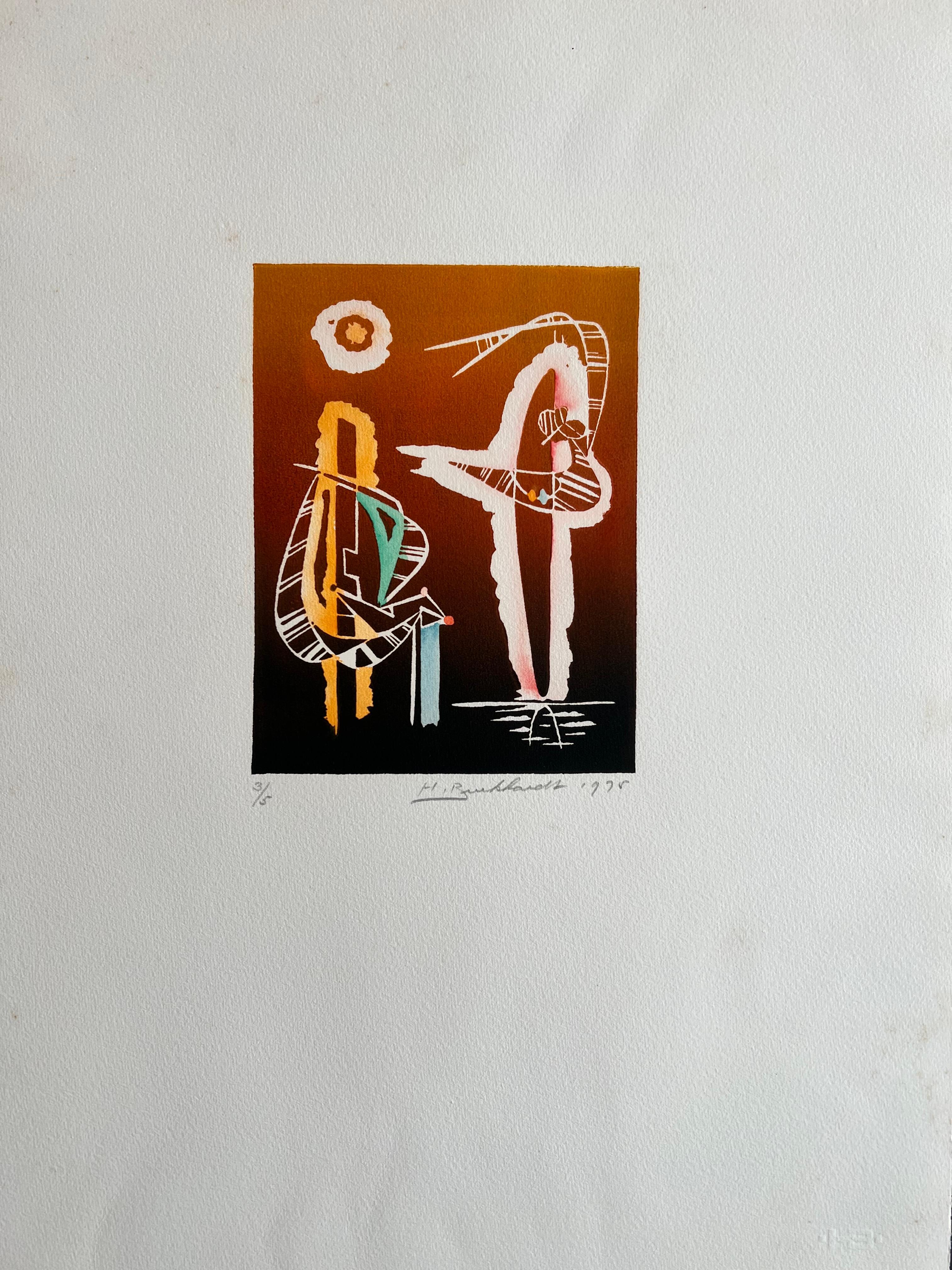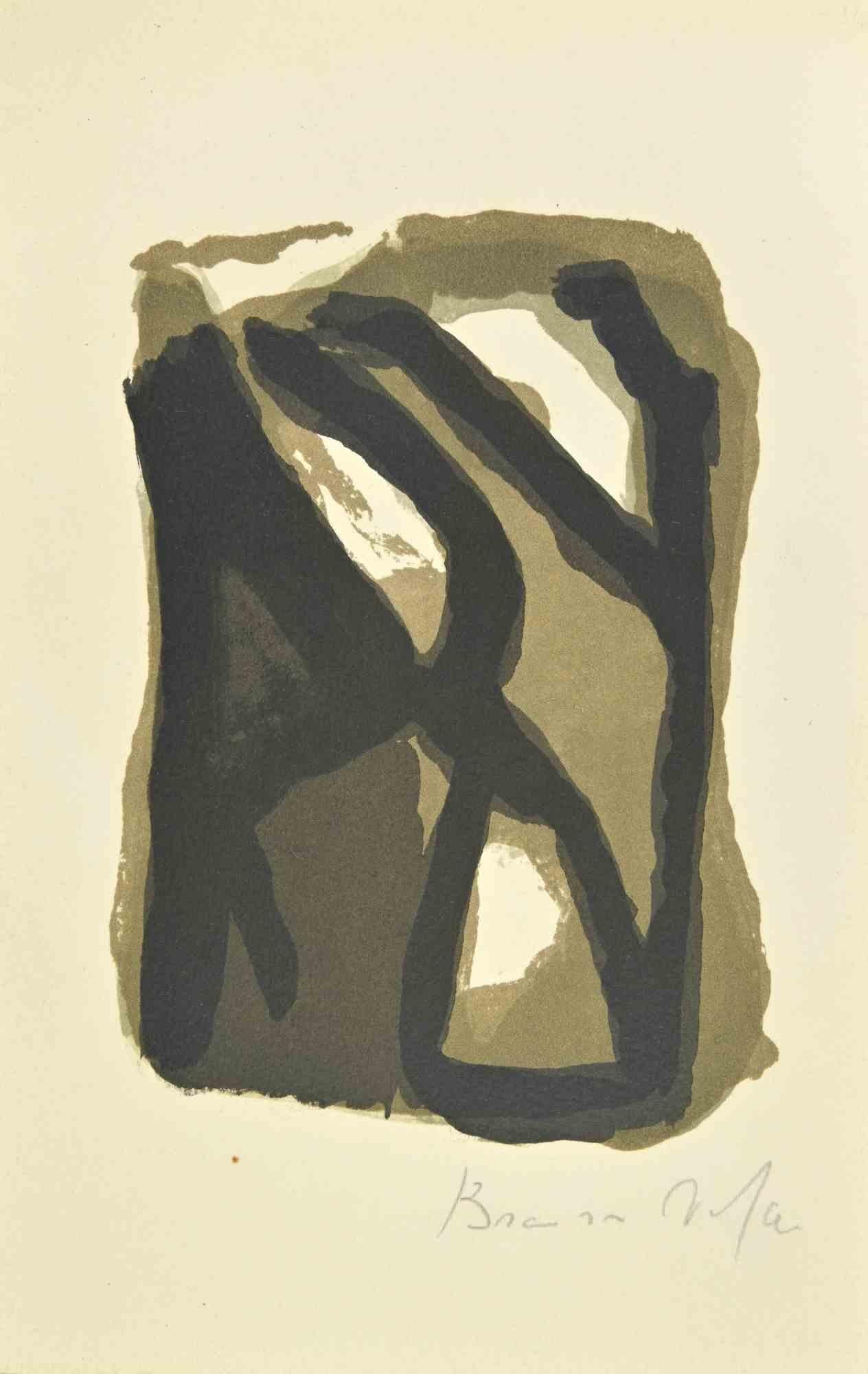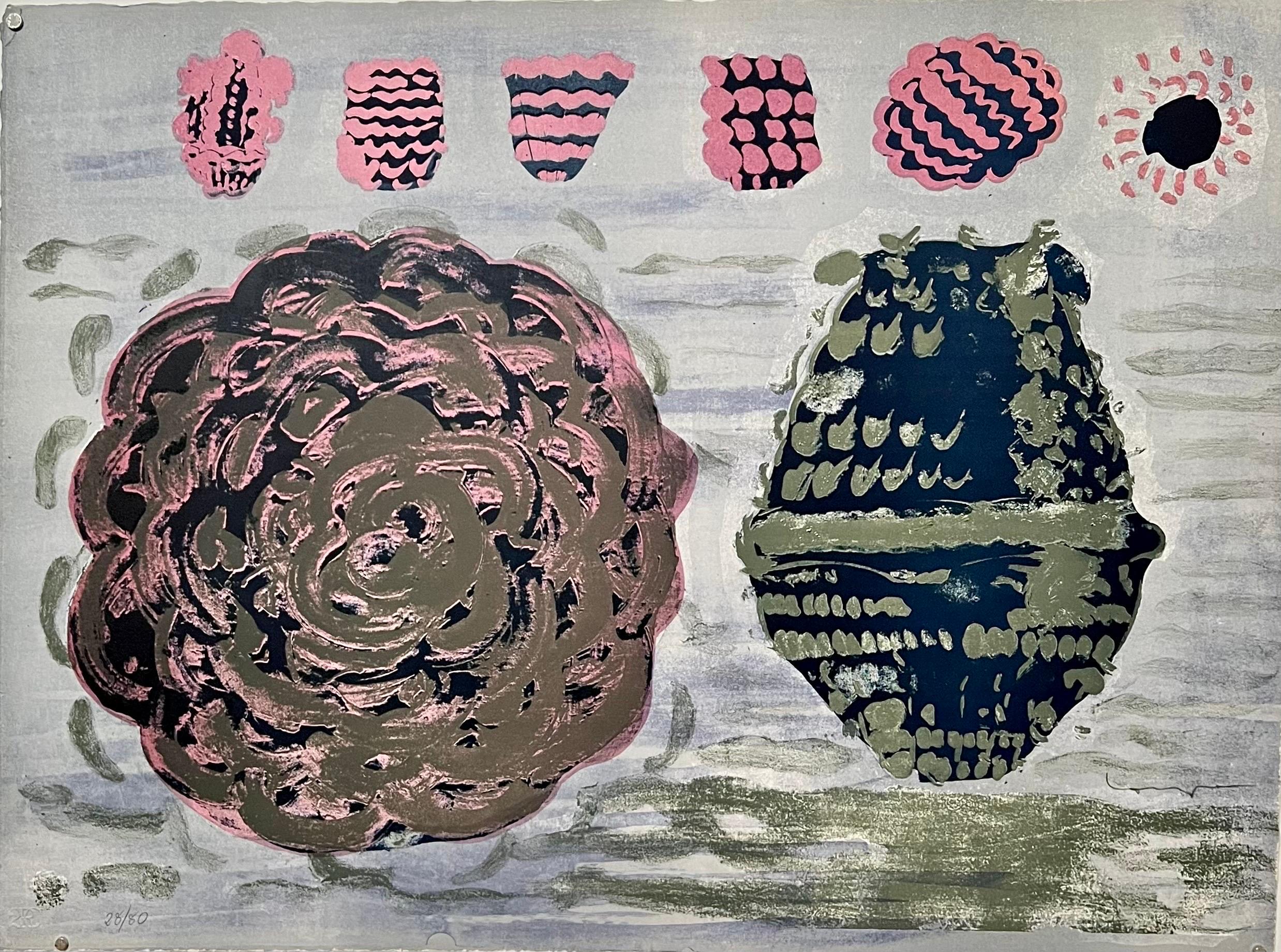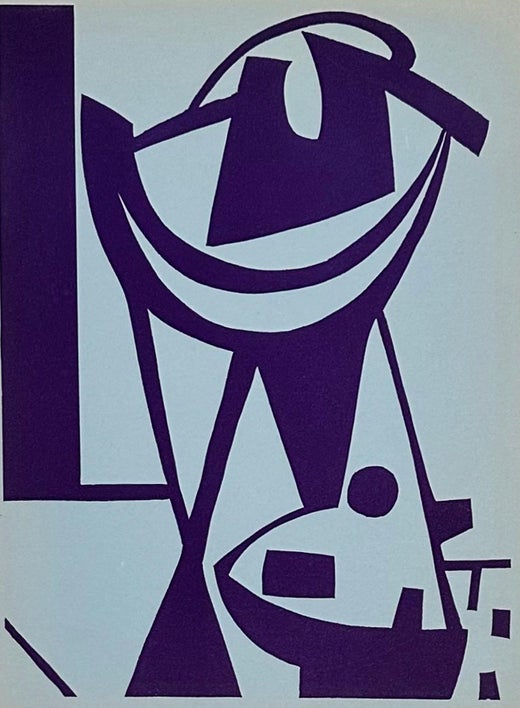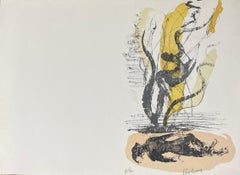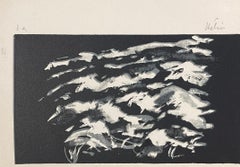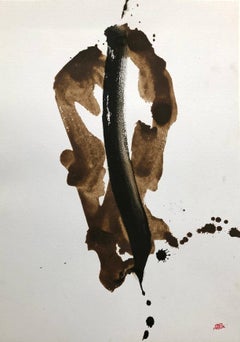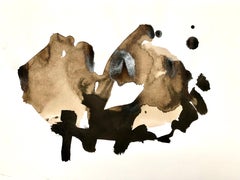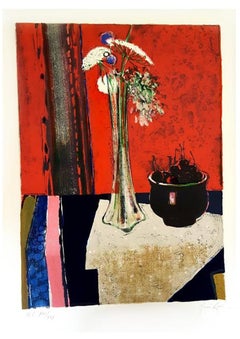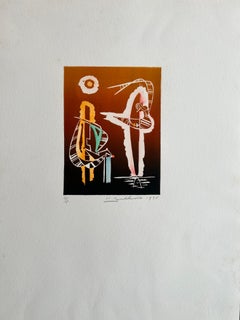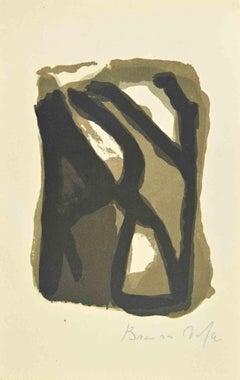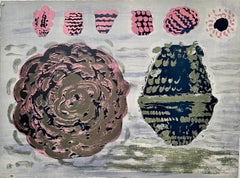Items Similar to French Modern Drawing by Jean Hélion - Herbiers
Want more images or videos?
Request additional images or videos from the seller
1 of 7
Jean HélionFrench Modern Drawing by Jean Hélion - Herbiers
$1,000
£758.66
€869.85
CA$1,424.56
A$1,546
CHF 813.44
MX$18,783.91
NOK 10,184.09
SEK 9,589.24
DKK 6,494.77
About the Item
Herbiers
undated
lithograph, artist proof (E.A) & signed by the artist
20,5 x 27,9 x 0,1 cm
sold without frame
about Jean Hélion (April 21, 1904 – October 27, 1987)
Jean Hélion was born on April 21, 1904, in Couterne, France. He entered the Institut Industriel du Nord in Lille to study chemistry in 1920 but left the following year to become an architectural apprentice in Paris. He painted while working as an architectural draftsman in the early 1920s. Hélion attracted the attention of the collector Georges Bine in 1925 and was soon able to devote himself entirely to painting. In 1927 he met Joaquín Torres-García, who collaborated on L'Acte, a short-lived magazine founded by Hélion and others.
Hélion first exhibited at the Salon des Indépendants in 1928. Shortly thereafter he became acquainted with Jean Arp, Piet Mondrian, and Antoine Pevsner. By 1929 his work was nonfigurative. With Theo van Doesburg and others in 1930 he formed the artists' association Art Concret and the periodical of the same name. This group was succeeded by Abstraction-Création the next year. In 1931, after traveling through Europe and the Soviet Union, Hélion returned to Paris, where he met Marcel Duchamp, Max Ernst, and Tristan Tzara. His first solo show was held at the Galerie Pierre in Paris in 1932. That same year Hélion made his first visit to New York, where he was given a solo exhibition at the John Becker Gallery at the end of 1933.
After returning to Europe from a second trip to the United States in 1934, he met Jacques Lipchitz, Joan Miró, and Ben Nicholson. In 1936 he settled in the United States, dividing his time between Virginia and New York. That year solo shows of his work took place at the Galerie Cahiers d'Art in Paris and the Valentine Gallery in New York. The artist traveled to Paris in 1938 on the occasion of his solo exhibition at the Galerie Pierre, and he became a friend of Paul Eluard, Matta, and Yves Tanguy. In 1939, he began integrating figurative elements into his work. This return to figuration was the hallmark of his postwar paintings.
Shortly after joining the French army in 1940 he was taken prisoner and sent to a camp in Pomerania and then Stettin. Hélion escaped in 1942 and that same year made his way to France and then the United States. His book They Shall Not Have Me was published in 1943, a year in which he was given solo shows at the Arts Club of Chicago and Peggy Guggenheim's Art of This Century, New York. Hélion returned to Paris in 1946. Throughout the 1950s and 1960s his work was shown in Europe and New York. During the 1970s he exhibited primarily in France. Hélion died on October 27, 1987, in Paris.
- Creator:Jean Hélion (1904 - 1987, French)
- Dimensions:Height: 8.08 in (20.5 cm)Width: 10.99 in (27.9 cm)Depth: 0.04 in (1 mm)
- Medium:
- Movement & Style:
- Period:
- Framing:Framing Options Available
- Condition:
- Gallery Location:Paris, FR
- Reference Number:1stDibs: LU108725553551
Jean Hélion
Jean Hélion, pseudonym of Jean Bichier, is a French painter and engraver, born April 21, 1904 in Couterne and died October 27, 1987 in Paris. His complex artistic itinerary passed, a rare case, from abstract art sometimes close to Piet Mondrian1 to figurative art. He helped introduce abstract art to the United States. Jean Hélion has always been able to express in his works his youthful spirit through the vivacity of the colors and the rhythm of his compositions. Hailed in the 1960s by the new generation of painters, that of Gilles Aillaud or Eduardo Arroyo, he is today considered the precursor of the New German Fauves of the 1970s and the figurative ones of the 1980s. above all his work of the 1930s and 1950s.
About the Seller
4.9
Platinum Seller
Premium sellers with a 4.7+ rating and 24-hour response times
Established in 2013
1stDibs seller since 2018
363 sales on 1stDibs
Typical response time: 3 hours
- ShippingRetrieving quote...Shipping from: Paris, France
- Return Policy
Authenticity Guarantee
In the unlikely event there’s an issue with an item’s authenticity, contact us within 1 year for a full refund. DetailsMoney-Back Guarantee
If your item is not as described, is damaged in transit, or does not arrive, contact us within 7 days for a full refund. Details24-Hour Cancellation
You have a 24-hour grace period in which to reconsider your purchase, with no questions asked.Vetted Professional Sellers
Our world-class sellers must adhere to strict standards for service and quality, maintaining the integrity of our listings.Price-Match Guarantee
If you find that a seller listed the same item for a lower price elsewhere, we’ll match it.Trusted Global Delivery
Our best-in-class carrier network provides specialized shipping options worldwide, including custom delivery.More From This Seller
View AllFrench Modern Drawing by Jean Hélion - Personnages
By Jean Hélion
Located in Paris, IDF
Personnages
undated
lithograph, artist proof (E.A) & signed by the artist
20,5 x 27,9 x 0,1 cm
sold without frame
about Jean Hélion (April 21, 1904 – October 27, 1987)
Jean Hélion ...
Category
1970s Modern Still-life Prints
Materials
Lithograph
French Modern Drawing by Jean Hélion - Floating Figures
By Jean Hélion
Located in Paris, IDF
Floating Figures
undated
lithograph, artist proof (E.A) & signed by the artist
22 x 15,5 x 0,1 cm
sold without frame
about Jean Hélion (April 21, 1904 – October 27, 1987)
Jean Hélion was born on April 21, 1904, in Couterne, France. He entered the Institut Industriel du Nord in Lille to study chemistry in 1920 but left the following year to become an architectural apprentice in Paris. He painted while working as an architectural draftsman in the early 1920s. Hélion attracted the attention of the collector Georges Bine in 1925 and was soon able to devote himself entirely to painting. In 1927 he met Joaquín Torres-García, who collaborated on L'Acte, a short-lived magazine founded by Hélion and others.
Hélion first exhibited at the Salon des Indépendants in 1928. Shortly thereafter he became acquainted with Jean Arp, Piet Mondrian, and Antoine Pevsner...
Category
1970s Modern Still-life Prints
Materials
Lithograph
French Contemporary Art by Frédérick Mazoir - Geotropisme 5
Located in Paris, IDF
Indian ink, carbon black, walnut husk, gouaches & blue oil on AMT paper
Category
2010s Contemporary Abstract Drawings and Watercolors
Materials
Walnut, India Ink, Gouache, Carbon Pencil
French Contemporary Art by Frédérick Mazoir - Geotropisme 16
Located in Paris, IDF
Indian ink, carbon black, walnut husk, gouaches & blue oil on canson paper
Category
2010s Contemporary Abstract Drawings and Watercolors
Materials
Walnut, India Ink, Gouache, Carbon Pencil
French Contemporary Art by Frédérick Mazoir - Visiting 7
Located in Paris, IDF
Indian ink, carbon black, walnut husk, gouaches & blue oil on canson paper
Category
2010s Contemporary Abstract Drawings and Watercolors
Materials
Walnut, India Ink, Gouache, Carbon Pencil
French Contemporary Art by Frédérick Mazoir - Geotropisme 4
Located in Paris, IDF
Indian ink, carbon black, walnut husk, gouaches & blue oil on canson paper
Category
2010s Contemporary Abstract Drawings and Watercolors
Materials
Walnut, India Ink, Gouache, Carbon Pencil
You May Also Like
René Lenig - Original Handsigned Lithograph - Ecole de Paris
By René Lenig
Located in Collonge Bellerive, Geneve, CH
René Lenig
Original Handsigned Lithograph
Dimensions: 76 x 54 cm
Edition: HC XXI/XXX
HandSigned and Numbered
Ecole de Paris au seuil de la mutation des Arts
Sentiers Editions
René Lenig was one of the great painters of the “Ecole de Paris” and of the second mid twenty century.
Category
1960s Modern Still-life Prints
Materials
Lithograph
Untitled lithograph by Hans Burkhardt
By Hans Burkhardt
Located in Hudson, NY
Abstract lithograph by Hans Burkhardt. Image is 7 3/4" x 6" and sheet size is 21" x 14 1/4". The edition is 3/5. Marked with both the artist's signature and date (H. Burkhardt 1975,...
Category
1970s Abstract Abstract Prints
Materials
Paper, Lithograph
Untitled - Lithograph by Bram Van Velde - Mid-20th Century
By Bram Van Velde
Located in Roma, IT
Untitled is an artwork realized by BRAM VAN VELDE (1895-1981)
Lithograph , cm 31x20
Signed in pencil on the front.
Very good condition.
Category
1970s Contemporary Abstract Prints
Materials
Lithograph
Pietro Consagra Italian Mod Abstract Expressionist Forma Art Informel Lithograph
By Pietro Consagra
Located in Surfside, FL
Pietro Consagra (Italian, 1920-2005).
Hand signed in pencil and numbered limited edition color lithograph on Magnani paper.
Embossed stamp with limited edition numbers in pencil to lower left, and having artist pencil signature to lower right.
(from a limited edition of 80 with 15 artist's proofs)
Published by Stamperia 2RC, Rome Italy and Marlborough Gallery, Rome, Italy.
Abstract Modernist work in colors, produced in the style of the Forma art movement of Postwar Italy, of which the artist was a prominent member.
Pietro Consagra (1920 – 2005) was an Italian Post war artist working in painting, printmaking and sculpture. In 1947 he was among the founding members of the Forma 1 group of artists, proponents of structured abstraction. (similar to the Art Informel and Art Brut in France and the Brutalist artists)
Consagra was born on 6 October 1920 in Mazara del Vallo, in the province of Trapani in south-western Sicily, to Luigi Consagra and Maria Lentini. From 1931 he enrolled in a trade school for sailors, studying first to become a mechanic, and later to become a captain. In 1938 he moved to Palermo, where he enrolled in the liceo artistico; despite an attack of tuberculosis, he graduated in 1941, and in the same year signed up at the Accademia di Belle Arti, where he studied sculpture under Archimede Campini. After the Invasion of Sicily and the Allied occupation of Palermo in 1943, Consagra found work as a caricaturist for the American Red Cross club of the city; he also joined the Italian Communist Party. Early in 1944, armed with a letter of introduction from an American officer, he travelled to Rome. There he came into contact with the Sicilian artist Concetto Maugeri, and through him with Renato Guttuso, who was also Sicilian and who introduced him to the intellectual life of the city and to other postwar artists such as Leoncillo Leonardi, Mario Mafai and Giulio Turcato. Consagra signed up at the Accademia di Belle Arti di Roma in September 1944 and studied sculpture there under Michele Guerrisi, but left before completing his diploma.
In 1947, with Carla Accardi, Ugo Attardi, Piero Dorazio, Mino Guerrini, Achille Perilli, Antonio Sanfilippo and Giulio Turcato, Consagra started the artist's group Forma 1, which advocated both Marxism and structured abstraction.
Steadily Consagra's work began to find an audience. Working primarily in metal, and later in marble and wood, his thin, roughly carved reliefs, began to be collected by Peggy Guggenheim and other important patrons of the arts. He showed at the Venice Biennale eleven times between 1950 and 1993, and in 1960 won the sculpture prize at the exhibition. During the 1960s he was associated with the Continuità group, an offshoot of Forma I, and in 1967 taught at the School of Arts in Minneapolis. Large commissions allowed him to begin working on a more monumental scale, and works of his were installed in the courtyard of the Foreign Ministry in Rome and in the European Parliament, Strasbourg. His work is found in the collections of The Tate Gallery, London, in Museo Cantonale d'Arte of Lugano and the Museum of Modern Art, Paris, and the National Gallery of Art in Washington, D.C..
Consagra returned to Sicily where he sculpted a number of significant works during the 1980s. With Senator Ludovico Corrao, he helped created an open-air museum in the new town of Gibellina, after the older town had been destroyed in the earthquake of 1968. Consagra designed the gates to the town's entrance, the building named "Meeting" and the gates to the cemetery, where he was later buried.
In 1952 Consagra published La necessità della scultura ("the need for sculpture"), a response to the essay La scultura lingua morta ("sculpture, a dead language"), published in 1945 by Arturo Martini. Other works include L'agguato c'è ("the snare exists", 1960), and La città frontale ("the frontal city", 1969). His autobiography, Vita Mia, was published by Feltrinelli in 1980. In 1989 a substantial retrospective exhibition of work by Consagra was shown at the Galleria Nazionale d'Arte Moderna in Rome; in 1993 a permanent exhibition of his work was installed there. In 1991 his work was shown in the Hermitage Museum in St. Petersburg. In 2002 the Galerie der Stadt Stuttgart opened a permanent exhibition of his work. He was one of ten artists invited by Giovanni Carandente, along with David Smith, Alexander Calder, Arnaldo Pomodoro, Lynn Chadwick, and Beverly Pepper, to fabricate works in Italsider factories in Italy for an outdoor exhibition, "Sculture nella città", held in Spoleto during the summer of 1962. He was included in the The 1962 International Prize for Sculpture the jury included Argan, Romero Brest and James Johnson Sweeney the former director of the Solomon R. Guggenheim Museum in New York. The participants included Louise Nevelson and John Chamberlain for the United States; Lygia Clark for Brazil; Pietro Consagra, Lucio Fontana, Nino Franchina, and Gió Pomodoro for Italy; Pablo Serrano for Spain; and Eduardo Paolozzi, William Turnbull, and Kenneth Armitage for England. Gyula Kosice, Noemí Gerstein, Julio Gero, Naum Knop...
Category
1960s Abstract Expressionist Abstract Prints
Materials
Lithograph
Composition, Éloge de Gromaire, Marcel Gromaire
By Marcel Gromaire
Located in Southampton, NY
Lithograph on vélin du Marais paper. Inscription: unsigned and unnumbered, as issued. Good condition with centerfold, as issued. Notes: From the volume, Éloge de Gromaire, 1958. Publ...
Category
1950s Modern Landscape Prints
Materials
Lithograph
$716 Sale Price
44% Off
Free Shipping
Untitled (from Ten Painters on War and Peace), hand signed lithograph
Located in Aventura, FL
Lithograph in colors on arches paper. Hand signed and numbered by Aviva Uri Edition 115/190.
From the "Ten Painters on War and Peace" portfolio. Printed...
Category
1970s Contemporary Abstract Prints
Materials
Paper, Lithograph
$375 Sale Price
25% Off
More Ways To Browse
Kaws Uk
Line Art Pencil
Man In Black Suit
Man Ray Photograph
Marcelo Martin Burgos
Masson Painter
Mid Century Walking Man Sculpture
Nightmare Before Christmas
Oil Paintings Of Deer
Orlinski Kong Sculpture
Painter Augustus
Pearl Royale
Peter Clay
Picasso Head Sculpture
Polo Pony
Portrait Handsome Man
Red Fox Oil Paintings
Ruan Hoffmann
